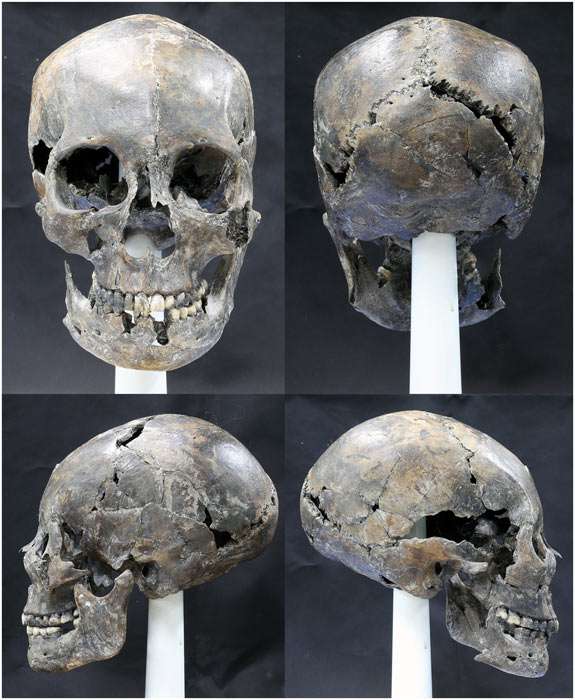
back to Elongated Skulls from Ancient Races on Earth

Contents of this page:
|
The following is from Étude de la déformation crânienne artificielle chez les chalcolithiques de Byblos (Liban), an article by M. Özbek. It appeared in Bulletins et Mémoires de la Société d'anthropologie de Paris Année 1974 Volume 1 Numéro 4 pp. 455-481. On page 460, there are drawings of two elongated skulls. Although the author tries to explain elongated skulls as the result of artificial cranial deformation, the top skull is very long and well formed. In my opinion both are natural. The first one has a much larger skull content, which is not possible with skull binding. They were found in the necropolis of the city of ancient Byblos, located in the modern city of Jbail. |
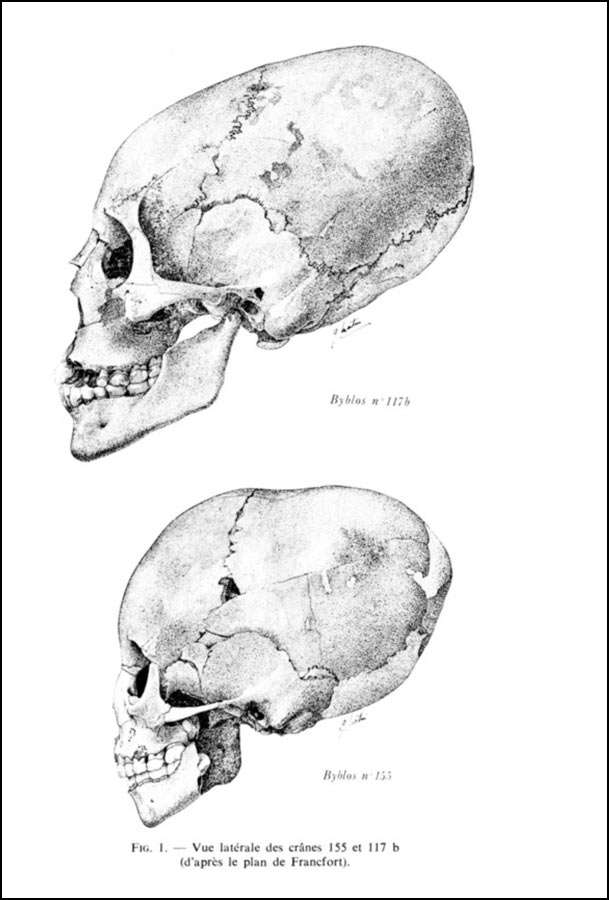
|
These skulls are in the Archaeological Museum in the city of Antakya (the ancient Antioch), in southern Turkey. The photos are from A. Koltypin's website. |
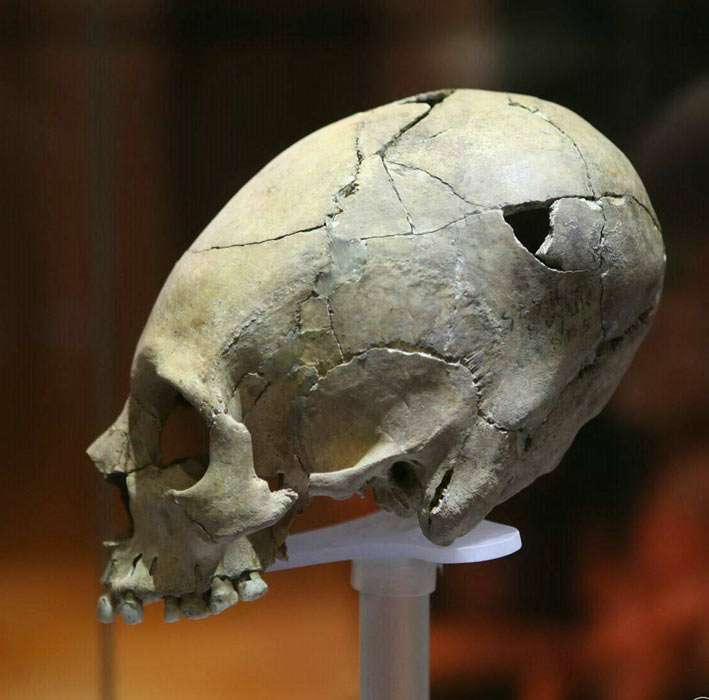 |
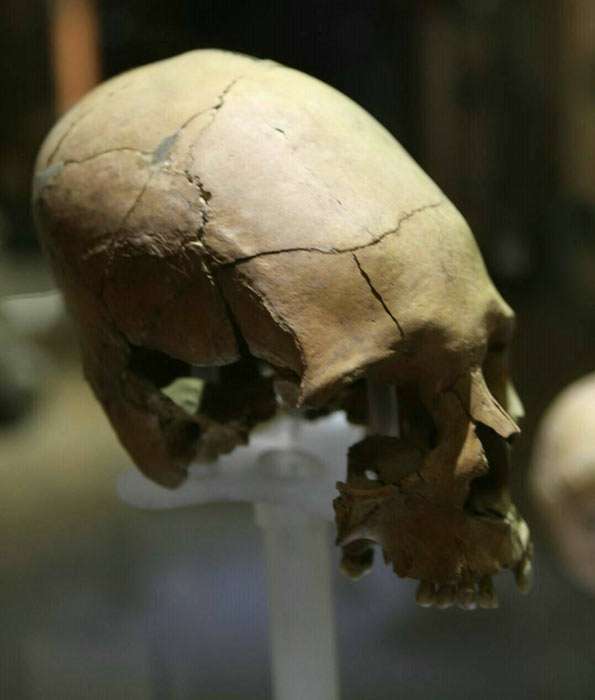 |
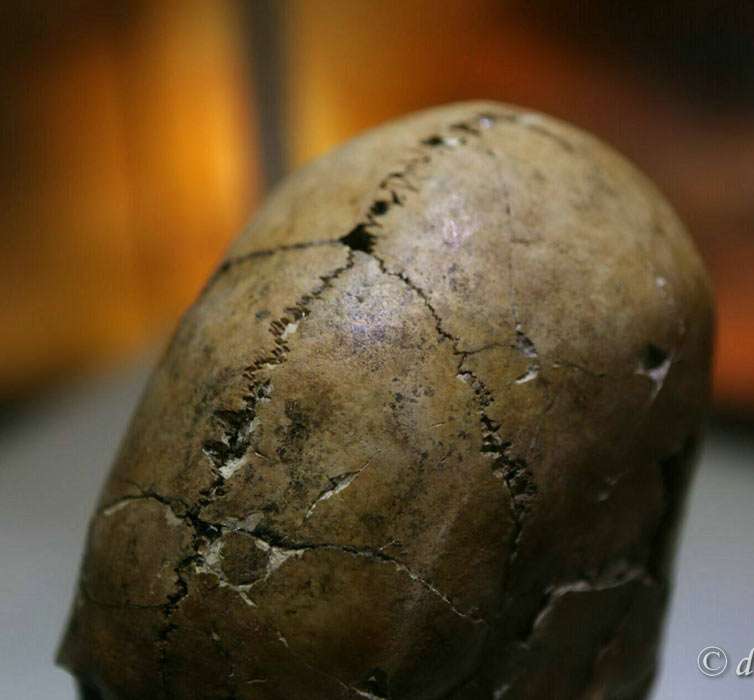 |
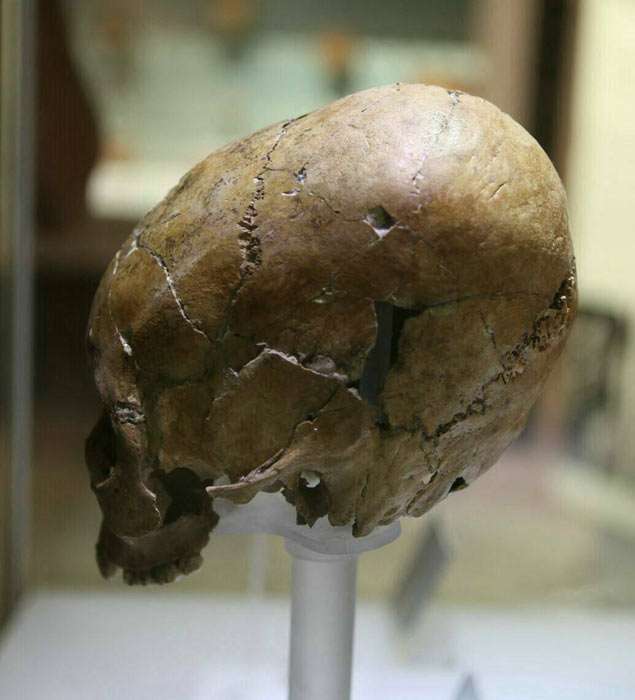 |
|
Tol-e Chega Sofla is a Late Village Period, i.e. 5000-3700 BCE site consisting of a settlement/residential area and a cemetery quarter. Its residential area includes several separate mounds. Tol-e Chega Sofla is located in the Zohreh Plain, 45 km south of the town of Behbahan in the most eastern fringes of Khuzestan Province. Several long skulls were found in different cemeteries. In the publication Tol-e Chega Sofla Cemetery: A Phenomenon in the Context of Late 5th Millennium Southwest Iran, by Abbas Moghaddam and Negin Miri, the authors attribute the long skull to deformation, but interestingly citing that these finds are not uncommon in the area: "Deformed skulls are not unknown from archaeological contexts of the Near East and were common in a large area extending from southern Mesopotamia to southern Turkey. The oldest examples of intentional cranial deformation were reported from Early Neolithic sites of Southwest Iran (Lorentz 2010). Here, they are reported from the Sefid Phase at Chogha Sefid in Dehluran (Hole 1977, 91), from Tepe Ali Kosh (Sołtysiak and Darabi 2017, 80), as well as much later during the Late Middle Susiana Phase at Chogha Mish (Ortner 1996, 321). At Tol-e Chega Sofla, the concentration of deformed skulls in grave BG1 (12 skulls) is striking. One example was also recovered from BG6, although the actual number might have been higher." |

|
In 1933, during construction work in the city of Harbin (in Heilongjiang province), a complete hominid skull was found. The discoverer, a laborer, hid the fossil in a well, because of the Japanese occupation. ears. The third generation of the man’s family learnt of his secret discovery before his death and recovered the fossil in 2018. The corresponding author (Qiang Ji) learnt of the cranium, and successfully persuaded the family to donate the specimen to the Geoscience Museum of Hebei GEO University (in the city of Shijiazhuang in Hebei province). Recent study showed that it belonged to a hominid race not previously discovered. It is dated at 146,000 years old. Because of marked differences it is believed to be a new separate lineage of Homo Sapiens. The Harbin cranium has a cranial capacity, or volume of the brain of about 1,420 mL, which is similar to modern day humans, but larger than other early hominids. It differs from all the other named Homo species by presenting a combination of features, such as long and low cranial vault, a wide and low face, large and almost square orbits, gently curved but massively developed supraorbital torus, flat and low cheekbones with a shallow canine fossa, and a shallow palate with thick alveolar bone supporting very large molars. The article Massive cranium from Harbin in northeastern China establishes a new Middle Pleistocene human lineage gives a lot more information for those interested in archaic humans. Here we are only interested in the elongated shape of the skull. |
Computer rendering of the Harbin skull:
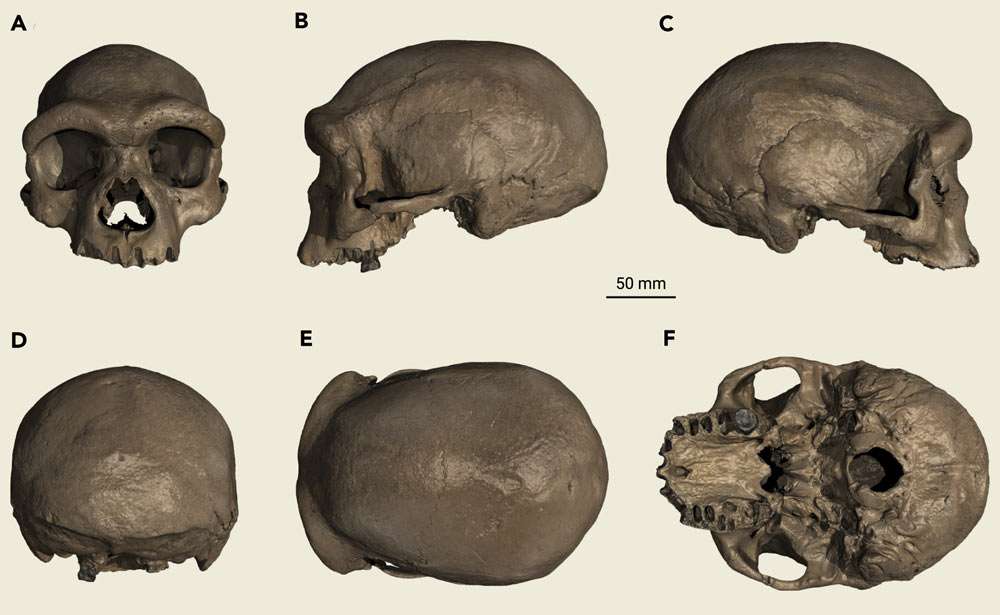
|
Compare the Harbin skull to a modern day skull. It is clearly a long skull, extended towards the back. You can also see the other differences that makes this a very different human. |
|
|
|
|
The authors of the article also provides us with a nice representation of how this Harbin human might have looked: |
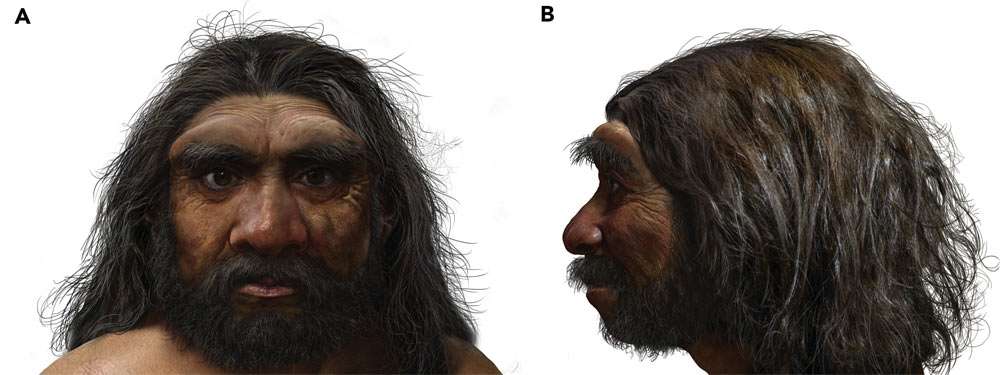
|
Then there is the following story about elongated skulls found nearby the city of Omsk in Siberia in the 1990's! Russian archeologists in the Siberian city of Omsk have found unusual elongated human skulls found in nearby forest, in burial mounds. The archeological team has begun studying bizarre, elongated human skulls found in a nearby forest almost ten years ago. Scholars at the Omsk Museum of History and Culture have no conclusive answer as to the origins of these skulls, which were found in burial mounds that are believed to date from the 4th century A.D. Because of the skulls' bizarre shape they do not show them to the public, fearing that people might be too shocked. Here are the pictures of the Omsk skulls: |
 |
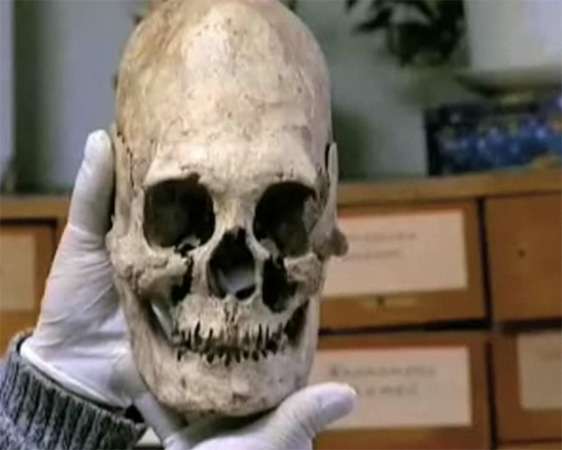 |
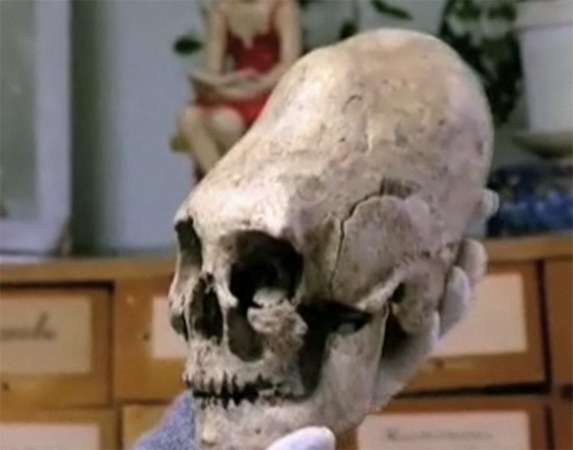 |
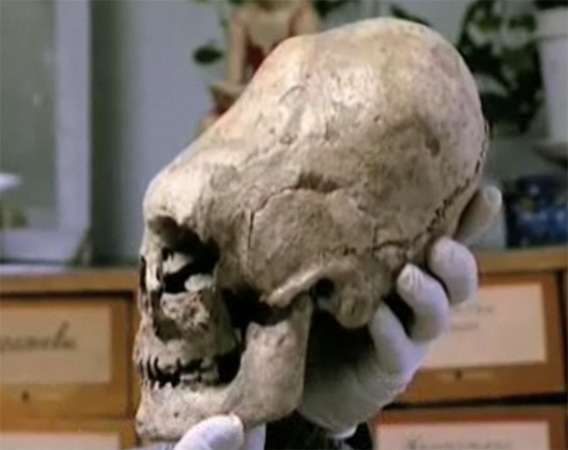 |
|
The remains were found in Arkaim, near Chelyabinsk in central Russia, a settlement dating back almost 4,000 years. It is believed the woman belonged to a tribe that was part of what is now modern day Ukraine. The skeleton is thought to date to the second or third century AD, making it considerably younger than the site. Arkaim is located in the Southern Urals in Russia and is thought to date to the 17th century BC. The 220,000 square foot (20,000 square meter) settlement was protected by two circular walls before it was burned down and abandoned. It had a central square surrounded by two circles of houses separated by a street. Historian K.K. Bystrushkin likened the site to Stonehenge in 2003, saying both allowed ancient people to study the stars. But Arkaim is thought to have been more advanced. Stonehenge allows for observations of 10 astronomical phenomena using 22 elements, while Arkaim enables observations of 18 phenomena using 30 elements. This means that ancient people could have observed and tracked certain events in the sky by using the site in certain ways from particular positions, and that Arkaim offered more observable events than Stonehenge. Source: Daily Mail UK |
|
|
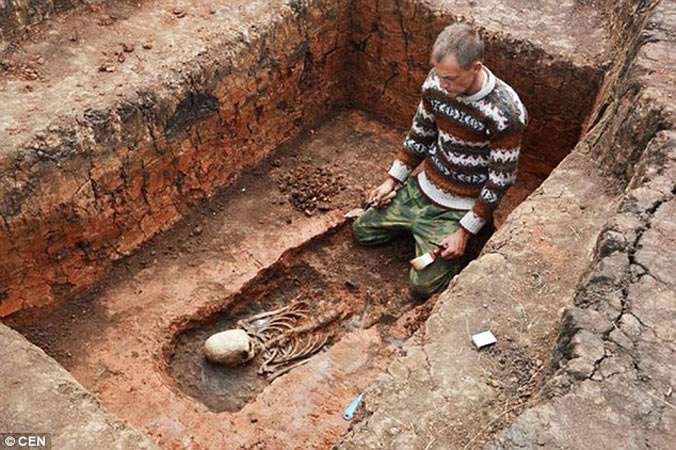 |
|
|
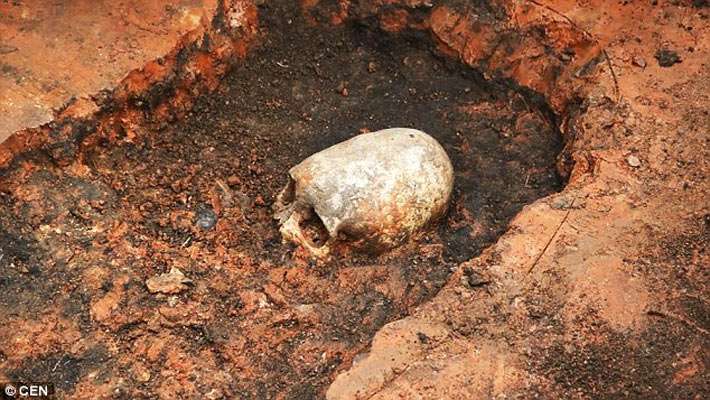 |
|
In Pyatigorsk, Russia (South-West Russia, between the Black Sea and Caspian Sea), more elongated skulls. The Pyatigorsk museum of regional studies has them on display. "The Pyatigorsk skull was found at the excavation site of the Khasaot burial ground in the vicinity of Kislovodsk," says Doctor of Historical Sciences Vladimir Kuznetsov, the author of numerous studies of history of the North Caucasus. "The skull is part of culture of the ancient Alani. Approximately, it dates back to the 3rd - 5th centuries A.D. These strange skulls appeared at the same time when the Sarmatian and Alani hordes came around. Some of the nomads moved for the North Caucasus in 15th century." |
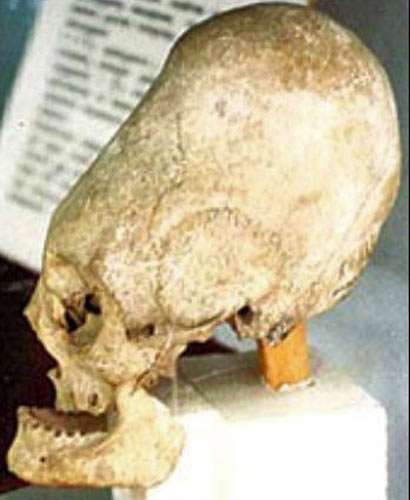
|
From the Museum of Kislovodsk. Kislovodsk is a city in the federal subject of Stavropol Krai in South Russia. The skulls were found in a valley on the outskirts of the city. |
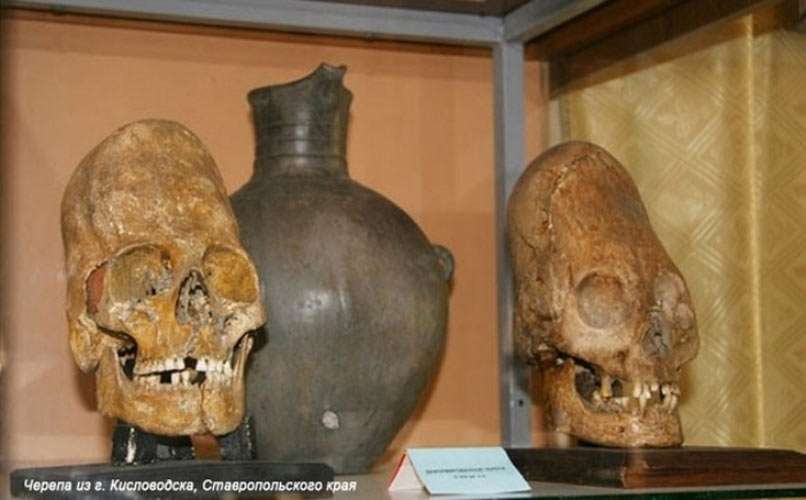 |
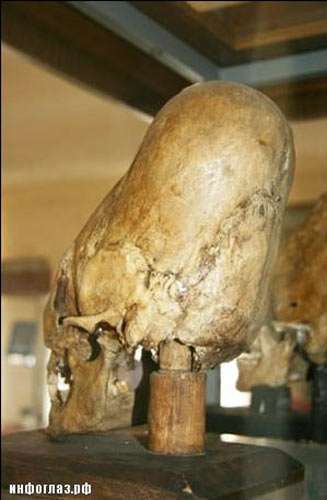 |
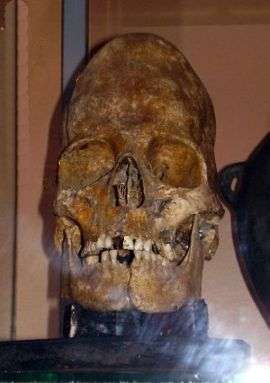 |
|
The Tobol river runs through Kazakhstan and the Russian federation. The excavation was an old burial site, called Ustyug-1, which dated from the 4th to the 6th century BC, and is located in the middle reaches of the Tobol River. According to experts of the Institute of Northern Development SB RAS (IFSP SB RAS), one of the people buried in the cemetery underwent skull deformation. Anthropological reconstruction of the skull of the man, which was 35-40 years old, is shown below. Reconstruction was done by Elena Alekseeva. During the excavation, which was led by Natalia Matveeva, a professor of Tyumen State University, and doctor of historical sciences, the researchers studied 19 mounds and discovered the remains 30 men, women and children. The burials were located not only under the mounds, but also between them. Some of the graves had already been looted and destroyed. A lot of them had long skulls. Test were done by a professor Gerasimov, who said that the skull volume was about 1/4 more than a normal human skull. |
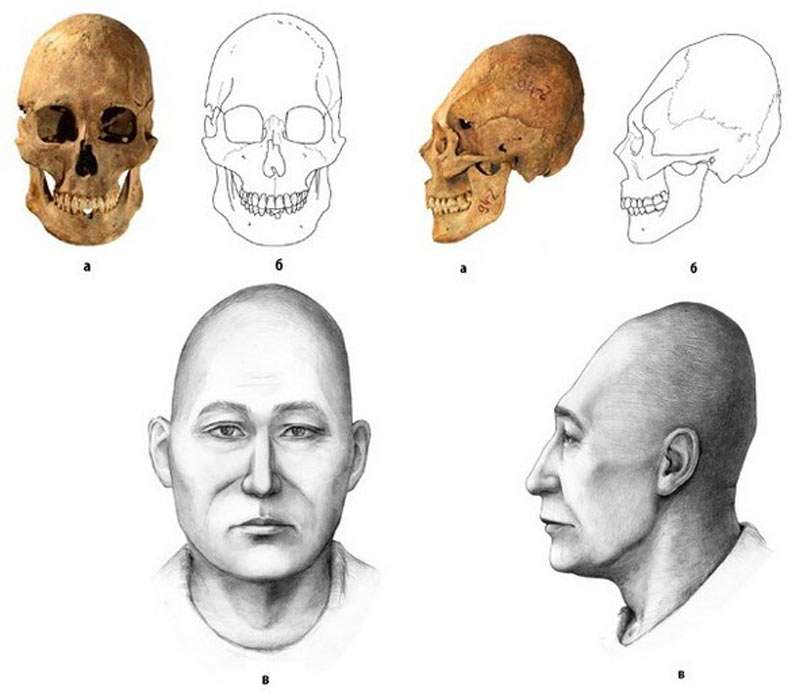
|
The remains of a 1.5-year-old boy with a large elongated skull were found near the village of Yakovenkovo in the eastern part of the Crimean Peninsula, says the Archaeology Fund (www.archae.ru), a group that organizes digs across Central Russia, Crimea and Northern Africa. The grave of boy dates back to the second century. Source: RT News, July 27, 2017 |
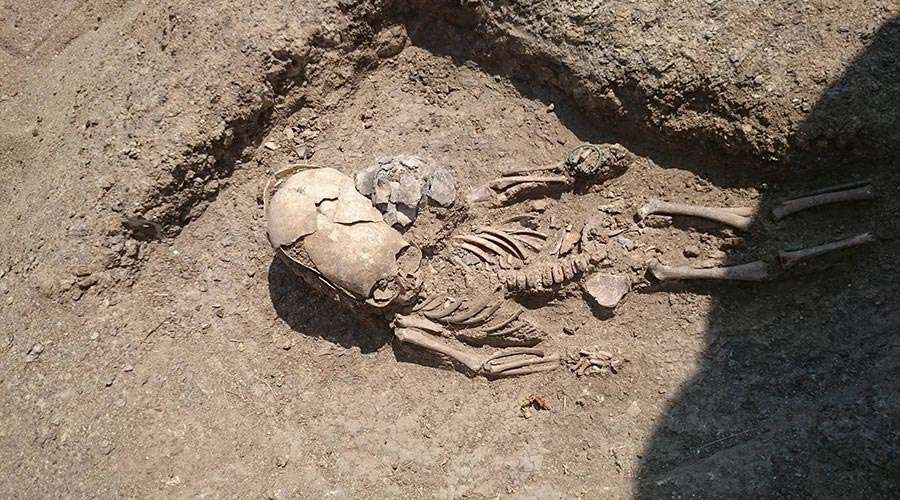
|
In late 2013, archaeologists excavating in advance of a driveway construction project near Gyeongju, a town in southeastern Korea that was the ancient capital of the Silla Kingdom, unearthed human skeletal remains. Found in a mokgwakmyo, a traditional wooden coffin, in a marshy area. The skeleton was complete and relatively well-preserved, albeit fragmented in places. Grave goods, including pottery and a wooden comb, were found inside the coffin that was identified as a Silla-era burial. [the Silla era was from 57 BC – 935 AD] When the fragmented skull was pieced together they found that it was an elongated skull. In technical terms it states that "The cephalic index (CI), at 73.5, suggested a dolichocephalic trait differed from the average or modern Korean adults". The cephalic index or cranial index is the ratio of the maximum width of the head of an organism (human or animal) multiplied by 100 divided by its maximum length (i.e., in the horizontal plane, or front to back). When it is smaller than 75 it is called 'dolichocephalic' or 'long-headed'. In contrast with the usual statement of artificial cranial deformation when such a skull is found, the scientists involved with this Korean find state clearly that this skull is a natural formation. Source: The History Blog.
|
